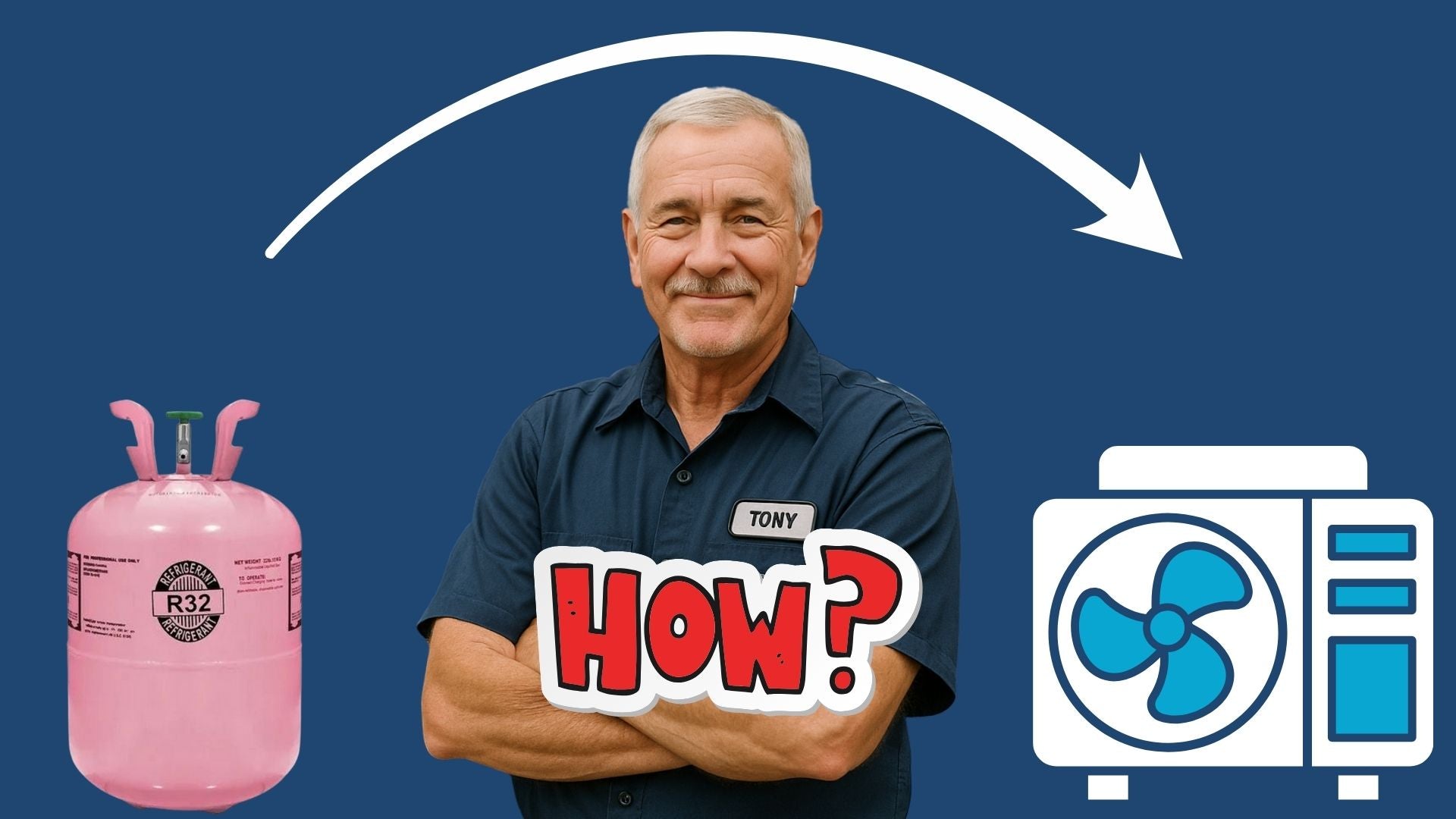Don’t Just Slap Parts Together—Here’s What Actually Works
I’ve seen some Frankenstein systems out there—R-32 AC condensers hooked up to outdated air handlers, oversized units blowing ductwork apart, and coils sweating like crazy because someone didn’t do their homework.
Let me be clear: matching your air handler to your R-32 condenser is critical if you want your system to run right. You can’t just pair any old indoor unit with a shiny new outdoor one and expect magic.
So here’s my no-BS, tech-tested guide to doing it right.
Step 1: Confirm R-32 Compatibility
Let’s start with the obvious—your air handler must be designed for R-32 refrigerant. R-32 has different pressure characteristics than R-410A, and the internal metering device (usually a TXV or piston) is tuned specifically for this refrigerant.
You can’t retrofit an R-410A coil and expect long-term performance. The coil construction, expansion valve, and refrigerant flow rates are all engineered for one job.
According to the Air Conditioning, Heating, and Refrigeration Institute (AHRI), manufacturers must certify units for specific refrigerants, and mismatched systems could void warranties or lead to code violations.
👉 Source: AHRI Guidance on Refrigerant Transitions
Step 2: Match Tonnage and Airflow
If your R-32 condenser is a 3-ton unit, your air handler needs to match that tonnage—no more, no less. Going too big or too small throws off your superheat and subcooling, creates humidity problems, and can even crack a coil or burn out a compressor.
Each ton of cooling requires roughly 400 CFM (cubic feet per minute) of airflow. So a 3-ton system needs an air handler that can consistently push 1200 CFM. If it can’t, the coil could freeze over in summer or struggle with heating in a heat pump application.
I recommend checking airflow specs from the ACCA Manual D guidelines, which give real-world ductwork and blower sizing examples.
👉 Source: ACCA Manual D – Residential Duct Design
Step 3: Check the Coil’s SEER2 Rating Compatibility
Today’s R-32 systems are rated under SEER2, a more rigorous and accurate energy efficiency standard than legacy SEER ratings. That means the coil in your air handler needs to match the SEER2 target of the condenser.
Let’s say you’re installing a 14.5 SEER2 R-32 AC unit. Pairing it with a mismatched air handler could drop your system’s efficiency below federal minimums—causing you to lose out on energy rebates and potentially fail inspection in certain states.
The U.S. Department of Energy explains the SEER2 transition and why it affects both indoor and outdoor units in system testing.
👉 Source: DOE Explains the SEER2 Efficiency Standard
Step 4: Use AHRI Matchups—Not Guesswork
Want to know what really works? Go to the AHRI Directory and punch in your model numbers. It’ll tell you which indoor and outdoor units have been tested together and certified to perform at their published efficiency.
This avoids callbacks, warranty issues, and keeps inspectors off your back. Every time I spec a system, I check that AHRI number. It’s like having a cheat sheet for HVAC installs.
👉 Source: AHRI Certified Product Directory
Step 5: Look at Blower Type and Static Pressure
Your air handler’s blower motor type makes a big difference in how well your R-32 system performs. You want a variable-speed or ECM motor that can adapt to static pressure changes, especially in tight duct systems.
If you're pairing a high-efficiency outdoor unit with a low-end PSC blower, you’re choking airflow, jacking up energy use, and asking for early failure.
The folks at HVAC School have a solid write-up comparing ECM vs. PSC motors for technicians.
👉 Source: HVAC School – ECM vs. PSC Motors
Bonus Tip: Look for Factory-Charged Matching Systems
If you want to take the guesswork out, look for factory-matched R-32 systems where the condenser and air handler are built and shipped to work together. These often come pre-charged and tested for optimal refrigerant levels and pressure.
Fewer variables, faster installs, better performance. Win-win-win.
Final Thoughts from the Field
I’ve matched hundreds of systems in my time, and when it comes to R-32, the margin for error is even tighter. You’re working with a lower charge, a more precise refrigerant, and tighter EPA and SEER2 guidelines. One bad match-up can waste energy, shorten equipment life, and give you a nightmare of callbacks.
Do it once, do it right, and double-check the matchups with AHRI. That’s how the pros roll.
Tony’s Takeaway:
-
✔️ Only pair air handlers certified for R-32
-
✔️ Match tonnage and airflow (400 CFM per ton)
-
✔️ Ensure both units meet the same SEER2 rating
-
✔️ Verify compatibility in the AHRI Directory
-
✔️ Choose air handlers with variable-speed blowers whenever possible







